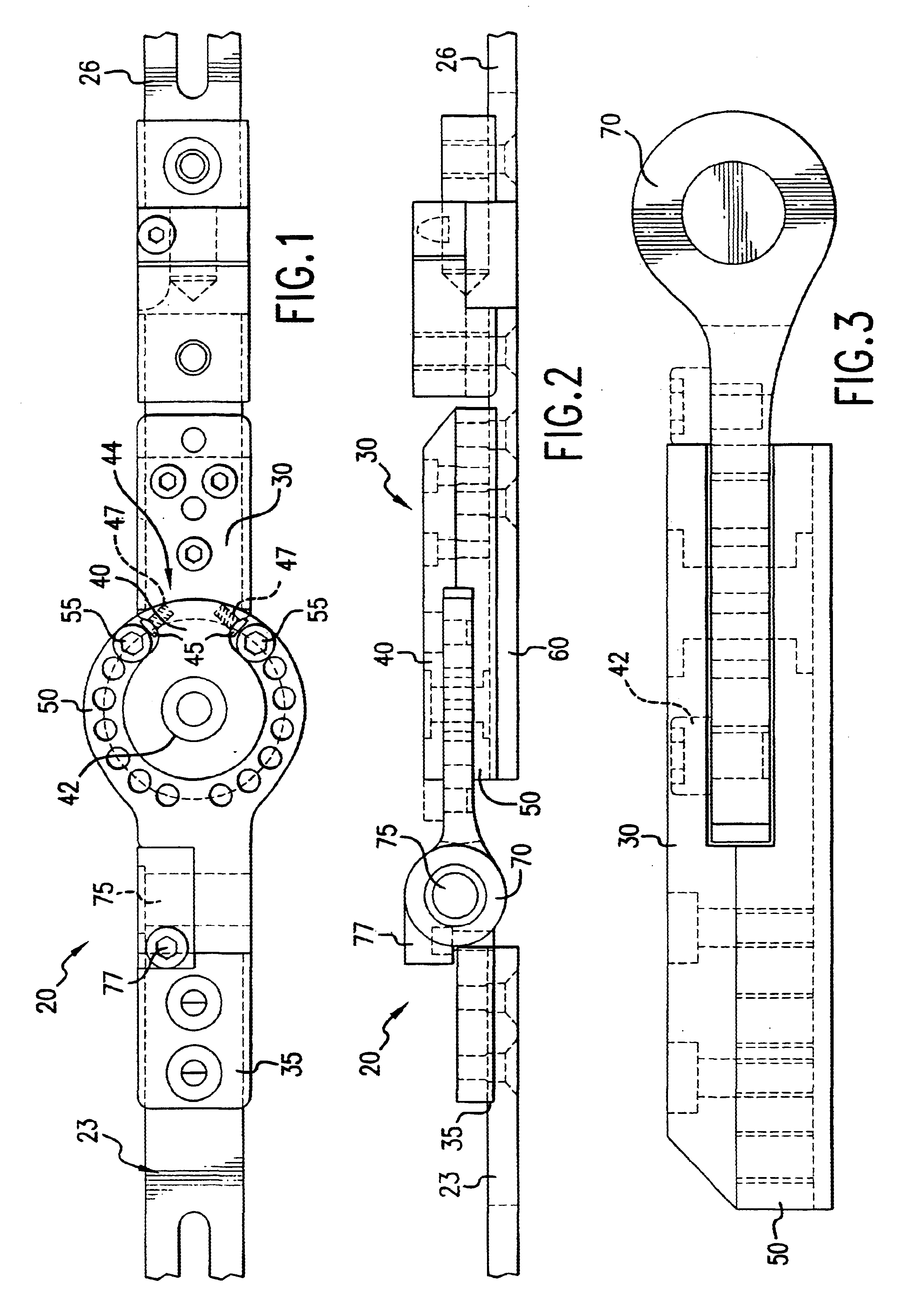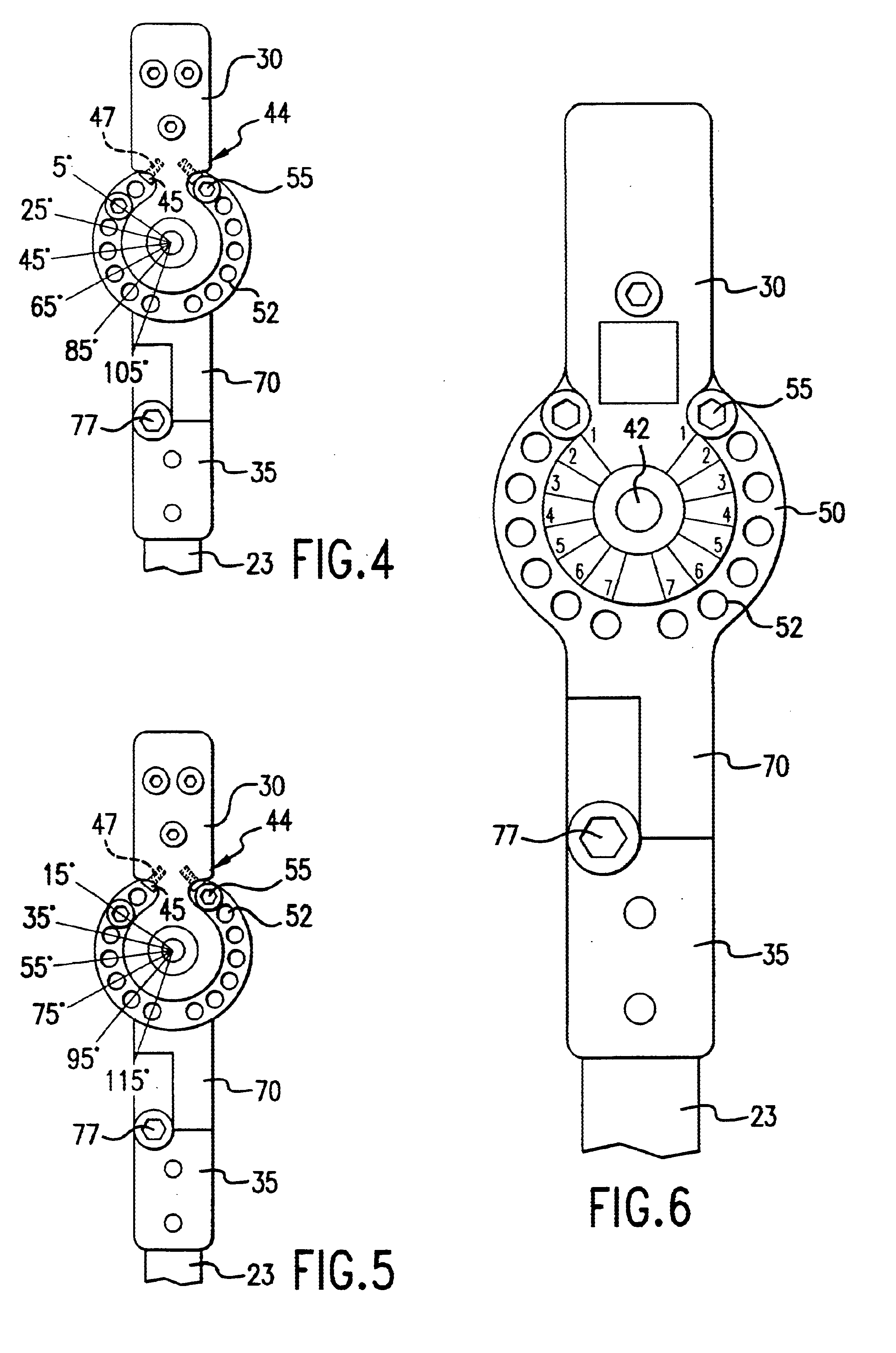Articulating joint for an orthopedic brace
a technology for orthopedic braces and articulating joints, which is applied in the field of articulating joints for orthopedic braces, can solve the problems of incompatibility of conventional articulating joints with many existing orthopedic braces
- Summary
- Abstract
- Description
- Claims
- Application Information
AI Technical Summary
Benefits of technology
Problems solved by technology
Method used
Image
Examples
Embodiment Construction
According to one preferred embodiment of this invention, joint 20 is positioned between two struts 23, 26 for limiting the rotational motion between the two struts 23, 26. First strut 23 is preferably attached with respect to one half of an orthopedic brace, such as hip brace 15 and second strut 26 is preferably attached with respect to thigh cuff 18.
As used in the Specification and Claims, the term rotation refers to movement between two specific components and does not generally refer to a medical term of art. The joint according to this invention is designed to permit and / or limit the range of motion of a patient in one or more, and preferably all, planes of movement. Such planes of movement include abduction, adduction, flexion, extension and rotation.
As shown in FIGS. 1-6, joint 20 preferably comprises fixed plate 30 and moveable plate 50. Fixed plate 30 and moveable plate 50 are preferably machined from steel, such as 1045 steel, for rigidity and durability. Due to the stresse...
PUM
 Login to View More
Login to View More Abstract
Description
Claims
Application Information
 Login to View More
Login to View More - R&D Engineer
- R&D Manager
- IP Professional
- Industry Leading Data Capabilities
- Powerful AI technology
- Patent DNA Extraction
Browse by: Latest US Patents, China's latest patents, Technical Efficacy Thesaurus, Application Domain, Technology Topic, Popular Technical Reports.
© 2024 PatSnap. All rights reserved.Legal|Privacy policy|Modern Slavery Act Transparency Statement|Sitemap|About US| Contact US: help@patsnap.com










